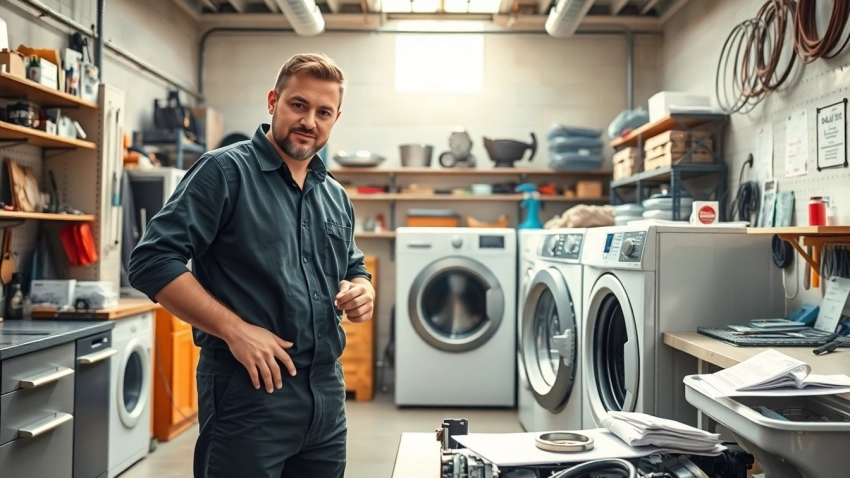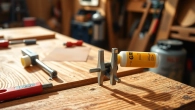
Essential Guide to Effective Washer Repair Techniques and Tips
Understanding Common Washer Problems
Washing machines have become invaluable household appliances, streamlining the laundry process and saving time. However, like any mechanical device, they can encounter issues that hinder their efficiency. This comprehensive guide aims to equip you with the knowledge necessary for effective washer repair and maintenance. By understanding common washer problems, you can tackle issues promptly and avoid costly repairs down the line.
Identifying Symptoms of Washer Malfunctions
Recognizing the early signs of washer malfunctions can save you considerable hassle. Typical symptoms include:
- Unusual Noises: Grinding, banging, or high-pitched whining can indicate mechanical issues, such as problems with the bearing or motor.
- Water Leaks: Any pooling water around your washer may point to loose hoses or a defective door seal.
- Failure to Start: If your washer does not respond when you turn it on, it could be a result of electrical issues or a faulty door latch.
- Drum Issues: The washer drum may refuse to spin or agitate due to problems with the drive belt or motor.
- Odors: Unpleasant smells can develop from trapped moisture or detergent residues, leading to mold or mildew.
Common Causes of Washer Issues
Understanding the underlying causes of washer problems can greatly aid in the repair process. Some frequent culprits include:
- Clogged Filters: Lint, hair, and debris can accumulate and obstruct filters, leading to drainage issues.
- Damaged Hoses: Can become kinked or cracked over time, which may lead to leaks or insufficient water flow.
- Electrical Failures: Issues in wiring, fuses, or circuit boards can disrupt the normal functioning of your machine.
- Wear and Tear: Components such as belts and bearings naturally degrade over time, requiring replacement.
Importance of Timely Washer Repair
Addressing washer issues swiftly is of utmost importance. Procrastinating repairs can result in:
- Increased Costs: What may start as a minor issue can escalate into a major repair if left unattended.
- Potential Damage: Ignoring a malfunction can lead to damages not only to the washer itself but also to your clothing or laundry area.
- Energy Inefficiency: A malfunctioning washer often consumes more energy, leading to higher utility bills.
Essential Tools for Washer Repair
Before you embark on any washer repair project, it’s crucial to equip yourself with the right tools to ensure effective problem solving.
Basic Tools Every Technician Needs
Whether you’re a professional or a DIY enthusiast, the following tools are essential:
- Screwdriver Set: Both Phillips and flathead screwdrivers are necessary for disassembling various components.
- Wrench Set: A set of adjustable wrenches will help with loosening and tightening nuts and bolts.
- Pliers: Needle-nose pliers can be useful for gripping small parts and holding wires.
- Multimeter: Electrical testing is essential; a multimeter can measure voltage, current, and resistance.
- Flashlight: A compact flashlight helps illuminate dark areas within the washer.
Advanced Tools for Professional Repairs
For technicians who frequently engage in washer repairs, investing in advanced tools can facilitate more extensive repairs:
- Drain Snake: This tool is invaluable for clearing stubborn clogs in the drain hose.
- Oscilloscope: For diagnosing complex electrical issues, an oscilloscope can provide detailed waveforms.
- Pressure Gauge: This device is essential for checking water pressure levels in washers.
Safety Equipment and Precautions
Safety should always be a priority when attempting repairs. Some required equipment includes:
- Safety Glasses: Protect your eyes from debris or accidental sprays during repairs.
- Gloves: Wear rubber or heavy-duty gloves to prevent cuts and electrical shocks.
- First-Aid Kit: Always have a basic first-aid kit nearby in case of injuries.
Step-by-Step Washer Repair Process
Conducting effective repairs involves a structured approach, ensuring that you systematically address the issues at hand.
Preparing for Washer Repair
Preparation is key when tackling any repair:
- Unplug the Washer: Ensure the machine is disconnected from the power supply to avoid electrical hazards.
- Gather Necessary Tools: Collect all the tools you will need for the repair process.
- Read the Manual: Familiarize yourself with the specific model’s manual to understand unique characteristics and parts.
Troubleshooting Techniques
Troubleshooting involves systematically checking potential problems:
- Check Connections: Inspect all connections to ensure they are secure and free from corrosion.
- Test with a Multimeter: Use a multimeter to check for continuity in electrical components.
- Examine Hoses and Filters: Look for blockages or kinks in hoses and clean or replace filters as needed.
Conducting Effective Repairs
Once the issues are identified, you can proceed with the repairs:
- Replace Defective Parts: Use OEM (Original Equipment Manufacturer) parts when necessary to ensure compatibility.
- Reassemble Carefully: Follow disassembly steps in reverse order, ensuring that all components are correctly reattached.
- Test the Washer: After repairs, run a small test load to verify that all issues have been resolved.
Maintenance Tips for Long-Lasting Machines
Proper maintenance is crucial for extending the life of your washer. Implementing these tips will keep your machine running smoothly for years to come.
Routine Checks to Prevent Breakdowns
Consider performing the following routine checks:
- Inspect Hoses: Regularly check hoses for cracks or fraying that may lead to leaks.
- Monitor Drum Movement: Ensure that the drum spins freely and does not wobble when spinning.
- Check Water Drainage: Make sure that water drains quickly and that there are no clogs.
Tips for Machine Care and Cleaning
Cleaning your washer is essential in maintaining its efficiency:
- Run Empty Cycles: Occasionally run a hot water cycle without any clothes to clear out residues.
- Wipe Down Surfaces: Clean the drum and door seals with a mild detergent to prevent mold buildup.
- Leave the Door Open: After use, leave the washer door open to allow moisture to dissipate.
Using Detergents and Additives Wisely
Utilizing detergents correctly is vital for both cleaning performance and machine health:
- Measure Detergent: Use the recommended amount of detergent to avoid excessive sudsing or buildup.
- Opt for HE Detergents: If you own a high-efficiency washer, ensure you use HE-rated detergents to prevent damage.
- Avoid Fabric Softeners: Consider alternatives like dryer balls, as fabric softeners can coat internal parts and lead to issues.
When to Call a Professional for Washer Repair
While DIY repairs can save you money, there are instances where professional intervention is not only beneficial but necessary.
Recognizing Complex Problems
Some washer issues may indicate more complicated internal problems, such as:
- Electrical Failures: If you are experiencing multiple electrical problems or cannot identify the root cause, it’s best to consult a professional.
- Severe Mechanical Damage: Issues with the motor or transmission often require specialized knowledge and tools.
Evaluating Repair Costs vs. Replacement
Determining whether to repair or replace your washer can be challenging:
- Compute Repair Costs: If repair costs exceed 50% of the price of a new machine, replacement might be more pragmatic.
- Consider Age: Older machines may become less efficient, so consider the balance between the repair costs and energy savings with a new unit.
Finding Qualified Repair Technicians
If you decide to seek professional help, ensure the technician is qualified:
- Check Credentials: Look for certifications or training that verify their expertise in appliance repair.
- Read Reviews: Customer feedback can provide insights into a technician’s reliability and skills.
- Request Quotes: Always get quotes from multiple technicians to ensure a competitive price for the service.











Leave a Reply